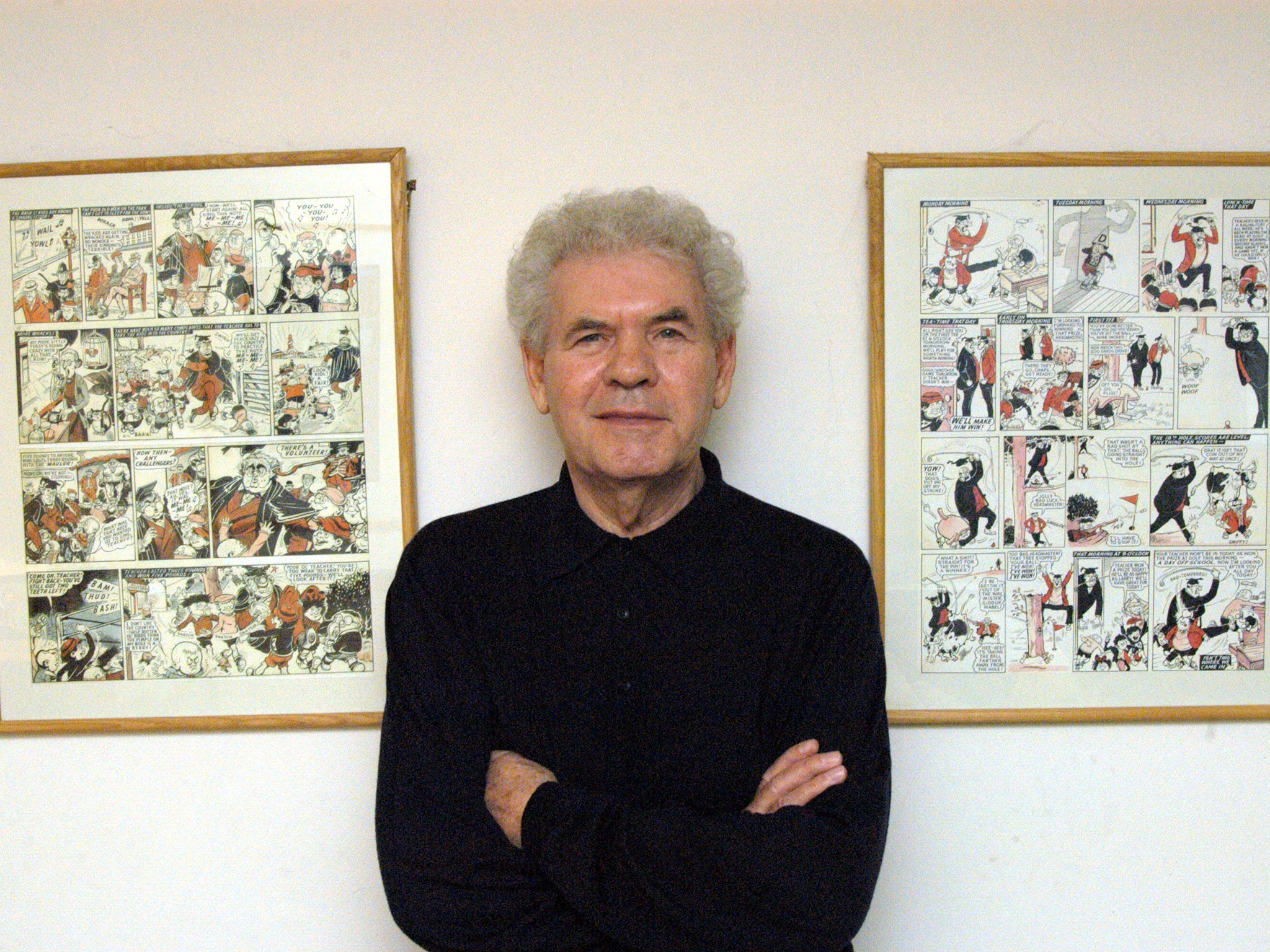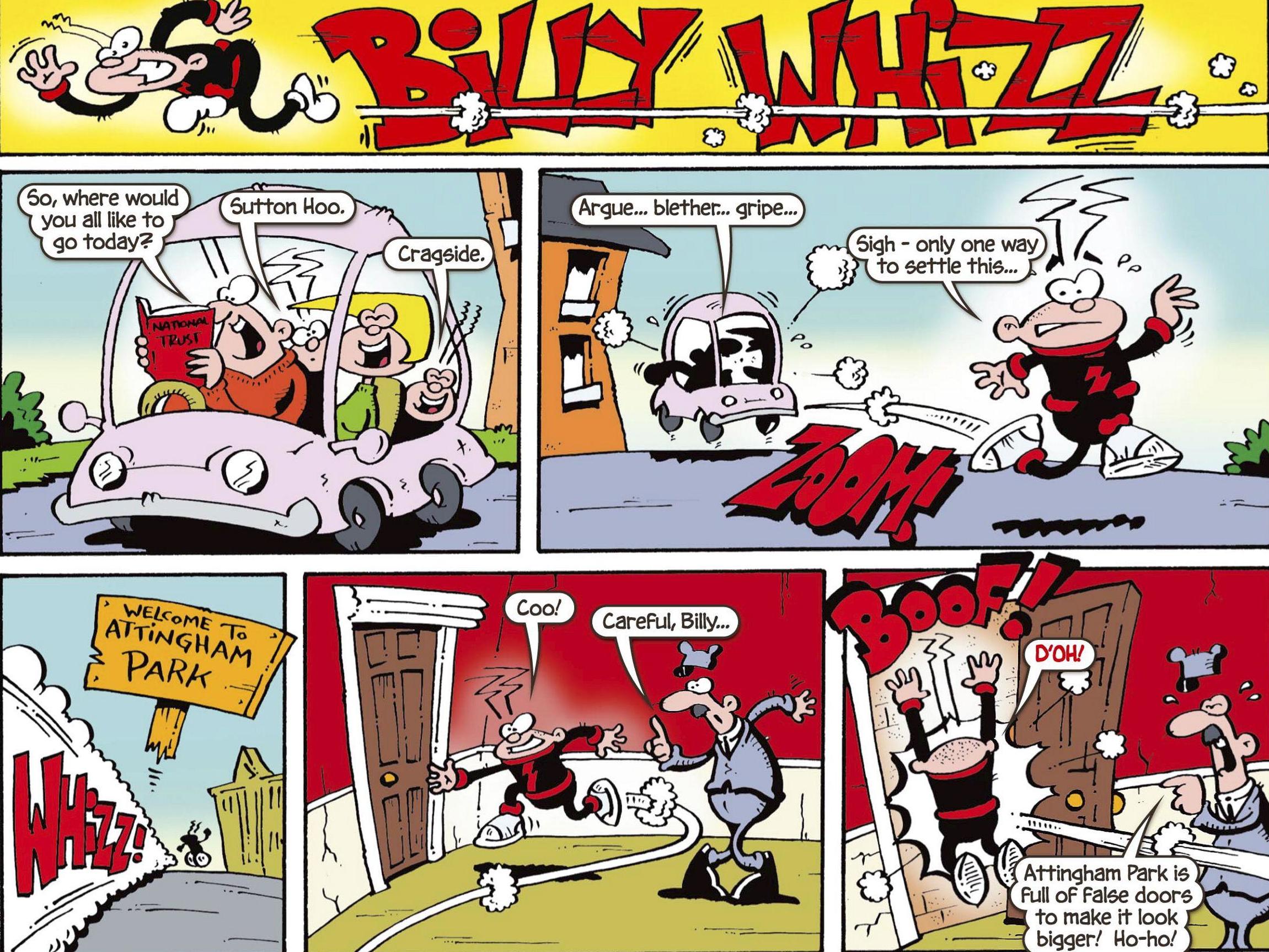The Beano at 80: A guide to the comic's most enduring characters, from Dennis the Menace to the Bash Street Kids
The children’s favourite has been home to Roger the Dodger, Minnie the Minx and their mischievous contemporaries for decades
Your support helps us to tell the story
From reproductive rights to climate change to Big Tech, The Independent is on the ground when the story is developing. Whether it's investigating the financials of Elon Musk's pro-Trump PAC or producing our latest documentary, 'The A Word', which shines a light on the American women fighting for reproductive rights, we know how important it is to parse out the facts from the messaging.
At such a critical moment in US history, we need reporters on the ground. Your donation allows us to keep sending journalists to speak to both sides of the story.
The Independent is trusted by Americans across the entire political spectrum. And unlike many other quality news outlets, we choose not to lock Americans out of our reporting and analysis with paywalls. We believe quality journalism should be available to everyone, paid for by those who can afford it.
Your support makes all the difference.Britain’s longest-running children’s comic, The Beano, celebrates its 80th birthday on 30 July. Run by Dundee-based publishing house DC Thomson since 1938, The Beano and its stablemate The Dandy are among the few surviving relics of Britain’s post-war comics boom, when titles such as The Eagle, The Topper and Bunty challenged penny chews to command the pocket money of the nation’s youth.
Incredibly, The Beano has had just seven editors over the eight decades it has been in print, with George Moonie, Harold Cramond and Euan Kerr the sole occupants of the hot seat between 1938 and 2006.
Its cast of characters has been equally consistent, with only a handful – notably Lord Snooty, Biffo the Bear and Little Plum – being dropped as anachronisms.
The anarchic brand of classroom humour the comic’s shorts-wearing protagonists have always stood for has barely changed with the passing of the years.
Dennis the Menace
Unquestionably the comic’s standout star, Dennis and his loyal dog Gnasher, apparently a wire-haired Abyssinian tripe hound, have appeared in The Beano since March 1951, drawn first by David Law and then by David Sutherland for almost a half-century between them.
Not to be confused with the American syndicated newspaper character of the same name who first appeared in precisely the same year, the duo were Beanotown’s neighbourhood terrors, armed with catapults, who took pride in causing chaos.
Their targeting of the effeminate swat Walter the Softy might now be considered homophobic bullying, although it was always clear it was Walter’s obnoxious manner and class pretensions the scrappy duo objected to, not his implied sexuality.
Roger the Dodger
Very loosely inspired by Charles Dickens’ Artful Dodger from Oliver Twist (1839), Roger’s commitment to worming his way out of household chores and homework was actually often more labour-intensive than the jobs themselves, a nice irony layered into this famous strip.
The character was first introduced in April 1953, created and drawn by Ken Reid, who clearly had an eye for a literary borrowing, also leafing through the Bible to bring the gormless sailor Jonah to The Beano’s pages.
Minnie the Minx
A female counterpart to Dennis, likewise dressed in threatening red and black stripes, Minnie’s first appearance in 1953, drawn by Leo Baxendale, was a progressive move to appeal to young girls.
Like Ronald Searle’s contemporaneous St Trinian’s School series (1946-52), Minnie was an acknowledgement that girls could be every bit as badly behaved as boys and need not be preoccupied with their looks.

The third-longest running character in the Beano pantheon, she was later joined by other anti-heroines like Ivy the Terrible and has her own statue in Dundee, along with The Dandy’s favourite cowpoke, Desperate Dan.
The Bash Street Kids
Class 2B at Bash Street School were led by Danny Morgan, instantly recognisable from his black skull jumper, and found new ways to torment their mortarboard-sporting teacher every week.
The rest of the gang was rounded out by twins Sidney and Toots, Plug, short-sighted ’Erbert, Fatty, Smiffy, Spotty and Wilfred, who peered out from behind his collar.
Like Walter, Cuthbert Cringeworthy was another “softy” frequently subjected to their pranks.
The Bash Street Kids date from 1954 and were another Baxendale invention, as were The Three Bears, re-enacting the Goldilocks fairytale in the Wild West.
Billy Whizz
An agreeably low-key British spin on the DC superhero The Flash, the super-fast Billy Whizz has been immortalised as a slang term for cocaine but was a neat character in his own right – his roaring speed was more often a hindrance than a help.
Billy was created in 1964 by Malcolm Judge, coinciding with the advent of the Silver Age of comics in America, when Stan Lee, Steve Ditko and Jack Kirby were in their element.

The Numskulls
First drawn for The Beezer in 1962, The Numbskulls lived inside the head of an everyman, later named Edd, and controlled his actions from within.
Brainy, Blinky, Radar, Snitch and Cruncher transferred to The Beano in 1993 and have been cited as an uncredited inspiration behind Pixar’s smash hit CGI animation Inside Out (2015).
Bananaman
Another brilliant parody of the Marvel and DC lineup worthy of Alan Moore, Bananaman was the alter ego of Eric Wimp, an ordinary schoolboy who became a muscle-bound flying adonis whenever he ate a banana. Which didn’t stop him being an oaf prone to pratfalls.
Originally appearing in Nutty in February 1980 and conceived by Steve Bright, Dave Donaldson and John Geering, Bananaman only transferred to The Beano and The Dandy in 2012 but is a firm favourite in the British imagination, not least because of the ingenuity of his banana skin cape, cowl and boots.

Join our commenting forum
Join thought-provoking conversations, follow other Independent readers and see their replies
Comments